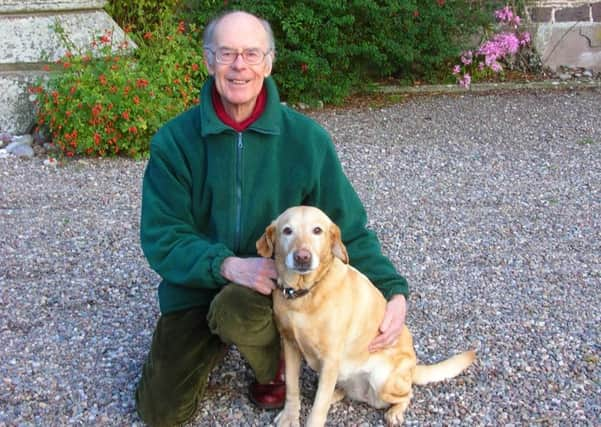Obituary: John Stansfeld, salmon fishing industry pioneer


John Stansfeld, known to his friends as Johnnie, was an innovator and pioneer in the Scottish salmon industry. He also worked tirelessly for the youth initiative in his local town, Montrose, The YM Montrose (formerly the YMCA). Another, rather different cause close to his heart, however, was the reputation of the sculptor William Lamb, a native of Montrose, who spent his working life in the town.
Born in 1935, Johnnie spent the war years in America after his father, a captain in the Gordon Highlanders, was captured at St Valery in June 1940. Johnnie and his younger brother, Martin, were evacuated to West Virginia where they were guests of the American philanthropist, art collector and family friend Paul Mellon.
Advertisement
Hide AdAdvertisement
Hide AdTheir mother, Molly, stayed behind to manage the family estate at Dunninald, near Montrose, which remains the Stansfeld family home. Returning home after five years, he attended the “Little Academy” in Montrose before going on to Eton and then Christchurch, Oxford, to read PPE.
In 1959 Johnnie followed his father into the salmon fishing company, Joseph Johnston and Sons (JJS). Their nets at Catterline were a favourite subject of artist Joan Eardley at just the moment that Johnnie joined the firm. From 1962 until his retirement in 2001 he served as a director of the firm. He was a champion of the wild Atlantic salmon and came to be both highly respected by his colleagues and widely recognised as an international authority on fisheries management. Throughout his 42 year career in fishing and fish farming, Johnnie worked with commitment and vision towards the modernisation of the industry. Even in the second half of the 20th century this remained a robust outdoor activity he embraced, regularly starting at the crack of dawn on the beach as crews set out to check for fresh salmon in nets little changed for hundreds of years.
He fought for the protection of salmon from coastal drift netting and lobbied successfully against the takeover of river purification boards by councils in the 1973 reorganisation of local government. This last he himself saw as his most significant achievement, and water quality eventually became part of the Scottish Environment Protection Agency’s remit, rather than of local environmental services.
It was, nevertheless, his innovative approach to fish farming for which Johnnie will be best remembered. He started by constructing a hatchery at Brechin in 1961. Then he oversaw the company’s diversification, from wild salmon netting on the east coast to salmon farming on the west coast. He was one of the first to make this move in Scotland. After careful consideration, he found the ideal site at Scourie, Sutherland. It was sheltered and accessible and offered the opportunity to revitalise the local community.
The operation continued to grow to reach a production of 1,800 tonnes per annum and continues as a thriving operation today.
In 1971, as director of JJS, he called together his fellow pioneers in the fledgling fish farming industry in Scotland. With him in the chair, they agreed to form an association, which became the Scottish Association of Fish Farmers. Through it, they could argue collectively on behalf of their new industry. One common problem, for instance, was crippling rates assessed on a poor, or non-existent, understanding of what a fish farm is or does. This collective action was a crucial step in the establishment of what is now one of Scotland’s major industries.
With a deep-rooted sense of community, Johnnie was also passionate about all things to do with Montrose, a devotion which earned him the title Montrose Citizen of the Year in 1991.
He was awarded an MBE in 1999 for his work with the YM Montrose, for which he served as Secretary from 1972 and latterly as Patron. With his commitment, dedication and leadership, he raised hundreds and thousands of pounds for the charity which provides a sanctuary for young people.
Advertisement
Hide AdAdvertisement
Hide AdJohnnie also gained considerable respect locally for his tireless devotion to bringing the sculptor, William Lamb, to the nation’s attention. After years of careful research, in 2013 he published William Lamb: The People’s Sculptor. The book recovered Lamb’s reputation and established him as one of Scotland’s most important sculptors of the inter-war years.
Johnnie met his wife Rosalinde during a fishing trip to the River Shin in 1964 and they married the following year. In 1984 he was appointed Deputy Lieutenant (DL) for Angus and in 1988 a Justice of the Peace (JP), positions he held for the best part of two decades. He was also a member of the Royal Company of Archers, the Queen’s Body Guard in Scotland.
He is survived by his wife, his three children, his six grandchildren and his brother.
A private family service was held at Dunninald on 25 March. A memorial service will take place at 2pm on Friday 17 May at Church of St Mary and St Peter, Montrose.
NICK STANSFELD